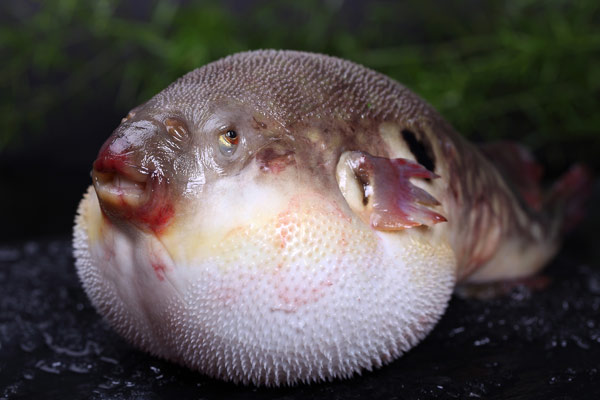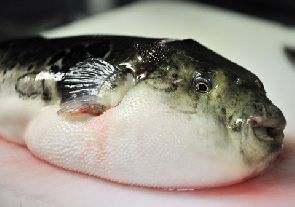Pufferfish is a tropical, scaleless, marine fish that when threatened can distend themselves to a large, roundish form and most of which are highly poisonous.
There are 40 types of puffer fish found in brackish water (a mix of salt and fresh water), and 29 species are found in freshwater.
Here are six facts about puffer fish
Â
Fact #1: PufferFish is a Delicacy
Pufferfish, when eaten, are toxic to predators and even humans. In Ghana, a certain group of people consumes the fish. Again countries such as Korea, China-Japan consider puffer fish a culinary delicacy and only specially-trained chefs know how to serve them safely.
Â
Fact #2: … Pufferfish can be Deadly
The toxin in the puffer fish, called tetrodotoxin, is found throughout its body and is actually produced by bacteria. Puffers that have been raised in a bacteria-free environment experimentally do not produce the toxin in that instance.
Even with proper preparation by a trained chef, about a half dozen diners die every year from the paralyzing effects of eating puffer fish, so they should generally not be considered food.

Pufferfish
 Fact #3: PufferFish is a Multi-Threat Fish
Despite using their fins to help them swim (with a tail fin acting as a rudder), puffer fish are notoriously slow-moving. However, they do have other methods for deterring or defeating predators out to get them.
-They have excellent eyesight, which is helpful for detecting predators early.
-Pufferfish have a burst of energy which they can muster to swim quickly away from predatorsÂ
-If they are unable to get away, they enact the process they are known for: they gulp in a large amount of water (or if out of water, air) to make themselves large and unappealing. This puffing, in addition to their spines and quills, makes them tough for a predator to swallow (and may get stuck in a throat).
-Even if a predator successfully eats a puffer fish, it may die from the toxin in the pufferfish’s body.
 Fact #4: Spines vs. Scales
Pufferfish do not have scales, but instead have spines (which you may not be able to get a good look at until they puff up). Because puffer fish don’t have scales, they are very sensitive to water variations and tend to be more at risk for diseases.
Â
Fact #5: They are What They Eat
In the wild, puffer fish are predators and eat a variety of snails, shellfish, crustaceans, and other fish. In captivity, puffers will eat almost anything, so a variety of foods should be offered to allow for a healthy mix.
Â
 Fact #6: A PufferFish’s Teeth Never Stop Growing
Many fish species have teeth that stop growing at some point, but pufferfish does not. Because they eat hard foods, they have teeth (also called beaks) that continuously grow throughout their lives. This makes it paramount to offer your puffer fish food with hard shells to help organically trim their teeth. Without snails or the like, your puffer fish may require veterinary dental attention.
Â
READ ALSO:
- Two confirmed dead at Afram Plains after consuming Pufferfish
- Govt to consider a total ban on pufferfish consumption-Dep.Min for Fisheries
For more Latest news in Ghana visit primenewsghana.com
Â





